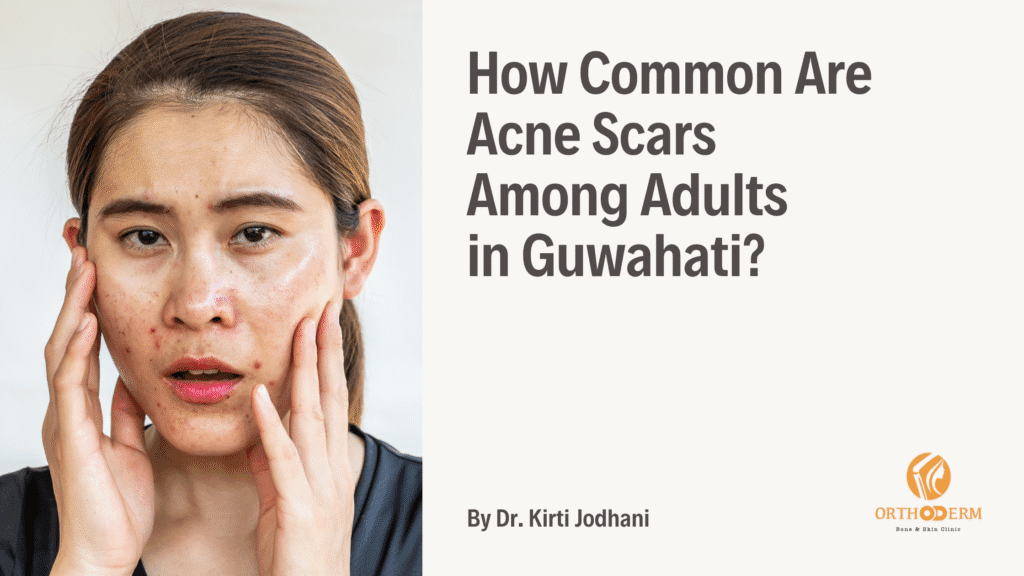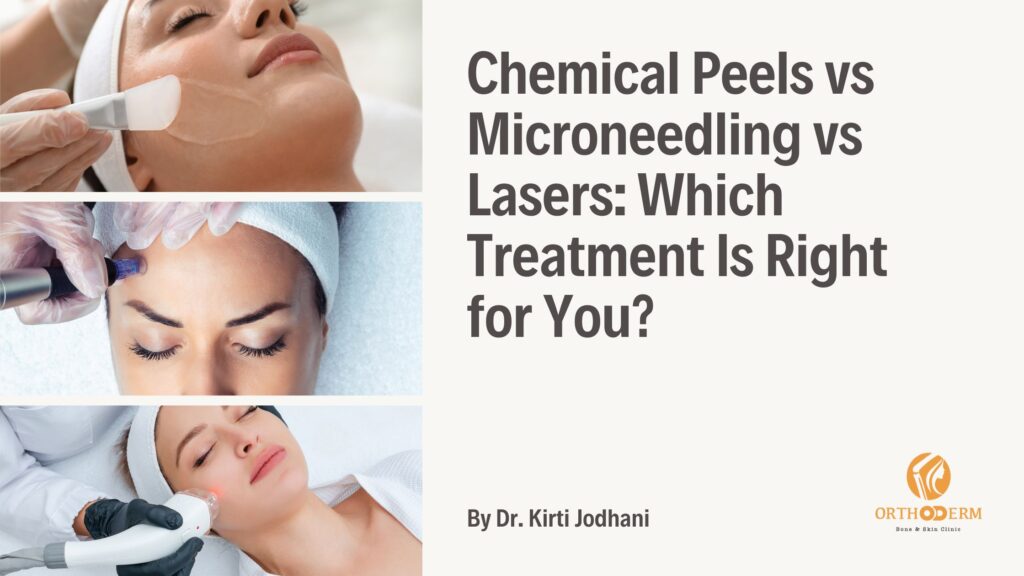As a practicing dermatologist in Guwahati, I often meet adults who feel embarrassed about the scars left behind by acne. Many people believe acne is only a teenage problem, but that is far from true. Adult acne is common, and so are the scars that follow if it is not treated on time. Let me share some facts and insights to help you understand how common acne scars are among adults in our region and what you can do about them.
Acne and Adult Acne: An Indian Perspective
Globally, acne affects around 9.4% of the population, making it one of the most widespread skin conditions in the world (JCAD Online, 2019). In India, studies show that about 27% of adults continue to struggle with acne even after their teenage years (Indian Journal of Dermatology, 2017).
Unlike many assume, acne does not spare adults. Hormonal changes, stress, pollution, and lifestyle habits all play a role in triggering breakouts well beyond adolescence.
How Common Are Acne Scars Among Adults?
Having acne is one thing, but the scars it leaves behind often cause more distress. A global review suggests that about 47% of people with acne develop scars. Interestingly, the rate is higher in adults—close to 59%—compared to younger patients, who show about 32% (PMC10240192, 2023).
In Indian studies, post‑acne scarring has been reported in about 29–39% of patients (IJDVL, 2015). Some hospital-based data even shows scarring in over 60% of adults with acne. These numbers are not just statistics; they reflect what I see in my clinic every week.
Insights From Guwahati and Northeast India
When we look closer at Guwahati and the Northeast, exact data is limited, but a study from Gauhati Medical College noted that acne makes up around 6% of all dermatology outpatient cases (ResearchGate, 2008). Based on national averages, we can estimate that around 30–60% of these patients may develop some form of scarring.
Our region’s high humidity and warm climate often worsen oil production and inflammation, making acne more persistent. In addition, many patients delay treatment, often trying home remedies or over‑the‑counter creams, which allows acne to heal with deeper damage.
What Types of Scars Are Common in Indian Adults?
Among the adults I treat, I most frequently see ice‑pick scars (about 60–65%), followed by boxcar scars (20–30%) and rolling scars (15–25%). Cheeks are the most commonly affected area, followed by the forehead and chin. These patterns match published Indian data (IJORD, 2018).
Why Do Some Adults Scar More Than Others?
Several factors increase the risk of scarring:
- Age: Adults over 25 years have a higher scarring rate than younger patients.
- Severity: Mild acne leaves scars in about 46% of cases, while severe acne leaves scars in more than 80% of cases (PMC10240192, 2023).
- Gender: Scars tend to be slightly more common in men.
- Family History and Delayed Treatment: Indian studies show a significant link between family history and persistent acne (PubMed, 2021).
What Most Websites Do Not Tell You
Most online articles talk about creams and procedures, but they rarely explain how local factors affect scarring. In Guwahati, the combination of high humidity, frequent sweating, and air pollution increases pore blockage and inflammation. Cultural habits, such as using heavy hair oils or certain cosmetic powders, can also aggravate acne. These are unique challenges that I always discuss with my patients here.
Prevention and Early Intervention
The most effective way to prevent scars is to treat acne early. I always encourage my patients to avoid squeezing pimples, follow a gentle skincare routine, and seek professional advice rather than relying on random products. Lifestyle adjustments—such as a balanced diet, stress management, and regular cleansing—make a big difference in our local climate.
Treatment Options in Guwahati
For those who already have scars, treatments like chemical peels, microneedling, fractional lasers, and platelet-rich plasma (PRP) therapy are available in Guwahati. I personalize treatment plans depending on the scar type, skin tone, and lifestyle of each patient.
Final Thoughts
Acne scars are far more common among adults in Guwahati than most people realize. Studies suggest that nearly half of all adults with acne may develop scars, and our regional factors can increase this risk. The good news is that with timely care, scarring can be minimized or treated effectively.
If you notice persistent acne or early scarring, I encourage you to consult a dermatologist. Early intervention can save you years of dealing with scars and help you regain healthy, confident skin.
Frequently Asked Questions
1. How will I know if my acne scars are permanent?
- Permanent scars are usually atrophic pits or raised areas that do not fade in weeks. I check their depth and texture before suggesting treatment.
2. Can adult acne scars be completely removed?
- I explain that while some scars can’t be erased, most can improve significantly—with up to 60–80% reduction using lasers, peels, or microneedling.
3. What treatments work best for dark‑skinned Indians?
- For Indian skin, I prefer procedures like Cross‑TCA, microneedling, and RF that offer collagen stimulation with minimal risk of pigmentation issues.
4. How soon should I seek treatment to prevent acne scars?
- I recommend seeing a dermatologist as soon as acne becomes inflammatory or nodular. Early treatment reduces scarring risk dramatically.
5. Are home remedies effective for acne scars?
- I tell patients that while turmeric or aloe vera may soothe skin, they rarely improve true scars. Professional care is more effective.



